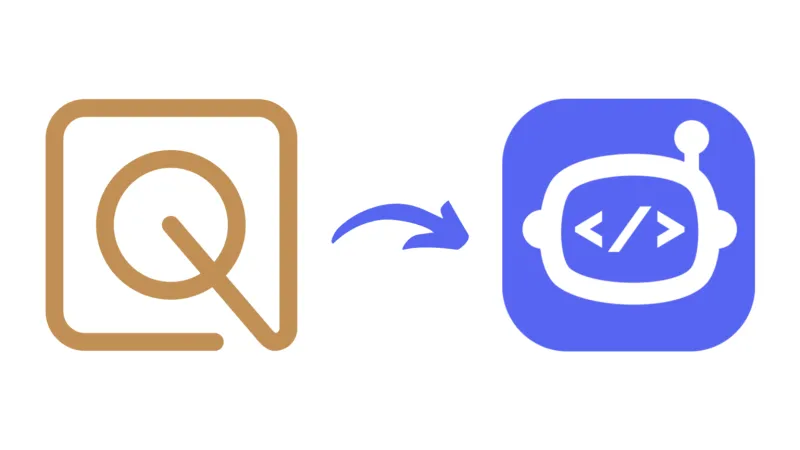Boot.dev Blog - Pg. 7
-


How Not to Ask for Help Online
May 20, 2022 by Lane WagnerI’ve spent an unhealthy amount of time online over the course of my life, and in the last couple years I’ve been managing a Discord server for people who are learning computer science. Like all online communities, we have ban, kick, and moderation policies so that we’re not overrun with spammers and other non-contributors. However, I’m not perfect, and I have realized recently that we get a decent number of members who at first glance seemed like a spammer, but it turns out they just have no idea how to communicate online in a way that’s useful to themselves and others.
-


6 Undeniable Reasons to Learn Computer Science
May 10, 2022 by Zulie RaneIs it a bit dramatic, perhaps, to say that the fate of the world rests on computer science and that’s why you should learn computer science?
-


The Problem with Education is a Problem of Incentives
May 10, 2022 by Lane WagnerI’ve found that almost anyone I talk to agrees with the statement: There is something wrong with education, particularly higher education.
-


We Just Launched Community Insights
Apr 27, 2022 by Lane Wagnertl;dr 🔗 At Boot.dev we’ve launched “community insights”! Insights make it possible for our students to drop comments at the bottom of any step in our coding courses. We’ve quickly found that we have amazing students, and it’s much better for everyone if we give them tools to help each other more directly.
-


Top 10 Communities For Learning to Code
Apr 20, 2022 by Zulie RaneWhy you need a coding community 🔗 The one thing that every programmer has in common, whether they’ve only ever implemented a “Hello World” program or they’re considered a “senior” software engineer, is the need to continuously learn. New technologies, programming languages, frameworks, libraries, and conventions are constantly being introduced to the industry. As a beginner, it can be hard to suss out what you need to know to enter the profession, and once you’re a proficient coder, it’s tiring to constantly investigate trending topics in tech.
-


Qvault is moving to Boot.dev
Apr 07, 2022 by Lane WagnerWe’ll keep this announcement short – we’ve moved Qvault.io to Boot.dev! As you know, we’ve been hard at work bootstrapping on online computer science bootcamp. Qvault (now Boot.dev) is a simple CS curriculum where our students build real projects using modern programming languages and technologies.
-


How to Build the Best GitHub Profile for Your Job Search
Mar 04, 2022 by Lane WagnerI’ve reviewed a lot of resumes, both as an engineering manager and in the monthly resume workshops we do in the Boot.dev Discord group. I’m convinced that these days a developer’s GitHub profile is just as important as their resume itself. If you haven’t started your first job yet, this advice is doubly important. Anyone looking to hire an entry-level developer is going to be diving into your public GitHub presence looking to get an idea for where your skill level is at.
-


8 Best Ways to Learn JavaScript, Personalized
Feb 05, 2022 by Meghan ReichenbachJavaScript is undoubtedly one of the best languages to learn as a developer, whether you’ve been at it for years or are just starting out. More than 97% of today’s websites are powered by JavaScript. Regardless of what field you work in, you’ll likely be exposed to JavaScript at some point, as the language is firmly entrenched in the online world.
-


How Long Does It Take To Learn JavaScript? (& How To Learn Fast)
Feb 05, 2022 by Zulie RaneA good programming language is one that newcomers can learn fast. This is one of the reasons why JavaScript is so popular – it’s possible to learn Javascript quickly and with minimum fuss.
-


Julia vs Python: Which is Best to Learn First?
Feb 05, 2022 by Zulie RaneAnyone who’s anyone in the tech world has heard of Python. It’s one of the most popular programming languages in the world, and it’s been near the top of developer popularity rankings for years. Wired reported that it’s tied for second with Java behind JavaScript.
-


The 7 Best Ways to Learn Golang and Find Your Inner Gopher
Feb 05, 2022 by Natalie SchoonerGolang was released in 2012, making it a relatively new language when compared to competitors like Python, which was released nearly two decades prior, yet it’s managed to stay ahead of the game as not only a coveted language by employers, but also loved by programmers.
-


Top 4 Practical Uses of JavaScript
Jan 30, 2022 by Zulie RaneJavaScript is one of the most versatile programming languages, maybe even more flexible than Python. JavaScript is used on both the front and back end of web systems. Because of that, of the 1.8 billion websites in the world, 95% of them use JavaScript. It’s hard to interact with the modern Internet, with its pretty graphics and interactive maps, without using JavaScript. Enable Marketing says the top four qualities of a visually appealing website are design and color, graphics and visuals, usability, and consistency. JavaScript is a major player in all four of those attributes.
-


How Hard Is Python to Learn?
Jan 24, 2022 by Zulie RaneQuick Answer: Python is one of the easiest coding languages to learn 🔗 Python is arguably the easiest programming language for beginners to learn. If you’re interested in writing code, Python is a fantastic place to start. Aside from just being easy to learn, it’s also widely used by industry professionals so you really can’t go wrong.
-


JavaScript vs C++: 3 Factors To Choose Which Is Best For You
Jan 22, 2022 by Zulie RaneEvery coder is told to learn JavaScript, seeing that it’s the foundation of the world wide web. And… every coder is taught that C++ is one of the most useful modern coding languages to learn. So no matter if you’re brand new to the coding world, or you have a few languages under your belt, you might be wondering whether you should tackle JavaScript vs C++ for your first (or next) language.
-
Qvault Hackathon Kickoff Jan 17th, 2022
Jan 16, 2022 by Lane WagnerWe’re starting our first hackathon in the Qvault Discord server on January 17th at 8AM. Everyone is welcome to participate. Let’s go over the details about of event. You can RSVP for the event here.
-


An Overview of Boot.dev's Full-Stack Architecture
Jan 10, 2022 by Lane WagnerBecause I’ve had several inquiries on this topic, I thought it would be interesting to publish some information on how the boot.dev website and platform work, and how I’ve organized all the technologies I’m using. I’ll do my best to keep this list updated in the future as I migrate from older tools and technologies to newer ones, but assume that this might be a bit out of date by the time you read it.
-


7 Best Practices for Every Python Developer
Jan 04, 2022 by Zulie RaneIf you’re looking to improve your coding, there are lots of steps you can take, but the first is focusing on Python best practices. It’s really important that your code is readable, testable, and maintainable. From picking good variable names, refactoring code that gets repeated out into its own method, or having clean and logical lines of inheritance and abstraction, there are a lot of qualities that differentiate code that someone wants to work with from code that everyone dreads having to maintain or develop further.
-


Python Assert Statement, How to Test a Condition
Dec 13, 2021 by Lane WagnerIn Python, an assertion is a statement that confirms something about the state of your program. For example, if you write a createUser function and you are sure that the user needs to be older than 18, you assert that the age field is greater than or equal to 18. You can think of an assert statement like a unit test that is performed at runtime.
-


Complete Guide to Removing Elements From Lists in Python
Dec 09, 2021 by Lane WagnerWhile lists aren’t the most efficient data structure if you’ll be doing lots of deleting from the middle, there are definitely good ways to accomplish the task. The built-in remove() method should be your first option. Let’s go over some examples.
-


How to Use the Ternary Operator in Python
Dec 09, 2021 by Lane WagnerDevelopers love concise code that’s easy to read, and that’s exactly what ternary operators are for. The ternary operator in Python lets you perform a small if/else statement in a single line. Let’s take a look at a few examples.
-


Removing Duplicates From a List in Python
Dec 09, 2021 by Lane WagnerLet’s go over a few idiomatic ways to remove duplicates from lists in Python. Method #1 - Create a new list (simplest) 🔗 This is the easiest algorithm to code, but because it requires creating a new list, also requires more memory and is a bit slower.
-


How to Check if a File Exists in Python
Dec 08, 2021 by Lane WagnerWhen working with files in Python, you’ll often need to check if a file exists before you do anything else with it, such as reading from or writing to it. Luckily, the Python standard library makes this a piece of cake.
-


How to Use Golang's Generics [Updated since 1.18]
Dec 06, 2021 by Lane WagnerGenerics in Go have been released with Go 1.18! This is one of the most eagerly-awaited features since the release of the language. Many devs have gone so far as to say Go’s previous lack of generic types made the language too painful to use at all. Let’s dive into what generics are, why you might use them in your own projects, and how they work in Go.
-


Your Code isn't Correct
Nov 29, 2021 by Lane WagnerThere is a common trap that we fall into as developers, and it is believing that because some code “worked” that the code was written “correctly”. In reality, for most technical problems, a good developer can likely point out several different solutions. Any of those solutions might be perfectly reasonable, while none of them is the single “correct way”.
-


Coding Interviews - Why you shouldn't give homework
Nov 18, 2021 by Lane WagnerA while back I went through the interview process at a company I won’t name here. The first interview was basically just a phone screen, where I was able to chat with my would-be manager about things like compensation range, tech stack, work duties, etc. It went well! The guy was delightful.